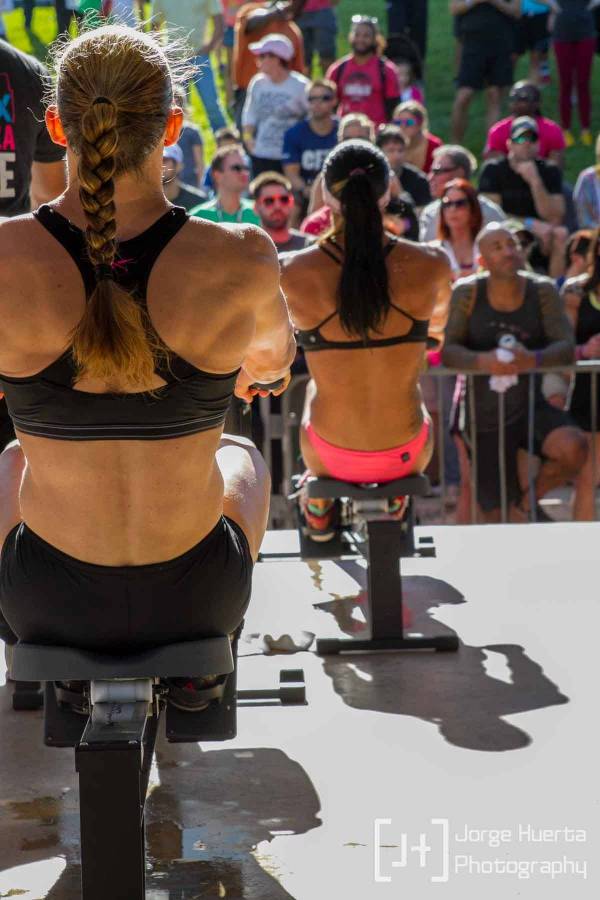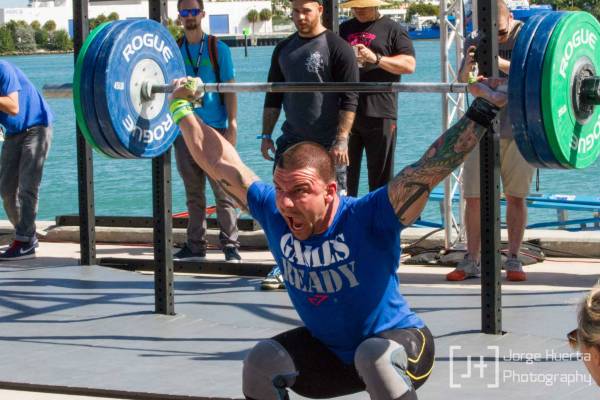My heart is heavy for Kevin Ogar in the wake of his awful accident at the OC Throwdown. The details of his accident are still not 100% known to all, but what I do know is that he took a spill doing a three-rep-max touch-and-go snatch and he damaged his thoracic vertebra eleven and twelve.
What does this mean? It’s likely that someone with this injury will have normal movement of the head, shoulders, neck, arms, wrists, and hands. More than likely, however, the person willl suffer partial to full paralysis of the lower extremities. Since we do not know the severity of Kevin Ogar’s injury, we also do not know the details of his status. All we know is that the lower the damage to the spine, the higher the chance of maintaining upper-body musculature. The stronger Kevin’s upper body is, the more functionality he will retain – which is what we all hope for.
The Statistics Regarding Injury in Weightlifting
No one is invincible, and injuries happen no matter what sport you are active in. We will go over some basic numbers for Olympic lifters since this is the primary area that many have been questioning in regards to Kevin’s accident, but generally when Olympic lifting is done right, the injury rate is fairly low.
The Journal of Athletic Training recently did a statistical study on injury rates of elite weightlifters. The researchers collected and analyzed medical injury records of athletes during numerous training camps in order to generate an injury profile. The subject group consisted of elite U.S. male weightlifters who were injured during training at the United States Olympic Training Centers.
The data results stated that the low back, knees, and shoulders accounted for the most significant number of injuries in the amount of 64.8%. The most common injuries were strains and tendinitis, which accounted for 68.9%. Injuries to the back primarily consisted of strains at 74.6%. The rate of acute injuries was calculated to be at about 3.3 injuries per thousand hours of lifting exposure. The injuries of typical elite weightlifters were primarily overuse injuries, not traumatic injuries and these injury patterns and rates were similar to those reported in other sports and activities. The bottom line to this data is that every sport has a risk of injury, especially if you decide to become competitive in that arena.
In regards to major injuries like the one Kevin Ogar sustained, according to National Spinal Cord Injury Statistical Center, sports accounted for 9.2% of all such cases since 2010 – which was the smallest category. The largest category for spinal cord injuries was injuries with a vehicular cause, coming in at 36.5%. It’s also important to note that the average age of injury was around 42 years of age. So what information should you take from this? Know that spinal cord injuries happen but are very uncommon in sports-related fields. Understand the risk is there, but the risk of overuse injuries is higher.
Insurance is Important If You Plan to Compete
 You never know what will happen to you. You may dislocate a shoulder, tear a muscle, and the list goes on. Being insured will almost guarantee that in the case of an accident you will have health care and rehabilitation (even if your deductible is high). I know insurance can be expensive, but if you plan to compete in anything, you should always cover your ass in case the worst does happen.
You never know what will happen to you. You may dislocate a shoulder, tear a muscle, and the list goes on. Being insured will almost guarantee that in the case of an accident you will have health care and rehabilitation (even if your deductible is high). I know insurance can be expensive, but if you plan to compete in anything, you should always cover your ass in case the worst does happen.
If you represent your gym or group, maybe have them pitch in to help you cover insurance costs. If you have endorsements, it may be in your best interest to have one of those endorsements cover the cost of insurance. Your life is worth so much more than just one competition. People refer to CrossFit as an extreme sport, but in truth it is no more extreme than football, soccer, or adventure racing. You can get hurt doing any sport and you should always protect yourself for that possibility.
Competitors: You Have the Power to Create Change
Recently, I had the opportunity to judge a local CrossFit-style competition. Everyone knew the first three workouts, but no one knew what the last and final event would be. After a full day of workouts, the body becomes extremely tired and activities become taxing on the nervous system. So when I heard the last event I about fell over. Here was event four:
2 Min AMRAP – Ring Muscle Ups
Then:
Men’s event:
12-9-6
- Back Squat at 315#
- Deadlift at 405#
- Bar-Facing Burpees
Women’s Event:
12-9-6
- Back Squat at 185#
- Deadlift at 275#
- Bar-Facing Burpees
This may appear to be a small event, but it is to the extreme in regard to rep scheme and load amount. I’m not saying these weights or this workout is impossible, but it was not the smartest WOD for the final event after everyone had just completed three previous workouts. As a result, the top ten males in the competition rallied together, went to the event coordinators, and said they would not do this workout because the risk of injury was too high.
 These men knew they had the power to change a bad situation, and I am proud to say they did. The event coordinators changed the rep scheme to 9-6-3 with back squat at 22lbs for men and 135lbs for women, and deadlift at 315lbs for men and 225lbs for women. The moral of this story is – never feeling forced to do something you do not want to do. If you are the one having to do the work and know the programming is not sound, rally your co-competitors together and change the situation.
These men knew they had the power to change a bad situation, and I am proud to say they did. The event coordinators changed the rep scheme to 9-6-3 with back squat at 22lbs for men and 135lbs for women, and deadlift at 315lbs for men and 225lbs for women. The moral of this story is – never feeling forced to do something you do not want to do. If you are the one having to do the work and know the programming is not sound, rally your co-competitors together and change the situation.
Keep in mind that your life and your health are more important than any race, CrossFit competition, adventure race, triathlon, or mixed martial arts fights. Be smart and make the right decisions for you. I am not saying don’t compete (life would be boring, right?), but remember that you are more important than any competition.
Click here to donate to the Kevin Ogar fund to help with his medical expenses.
References:
1. Jenkins, Mark and Micheli, Lyle J M.D., The Sports Medicine Bible. (New York: HarperCollins), 183-194.
2. Chen, Yuying PhD, MD. “Spinal Cord Injuries Facts and Figures.” National Spinal Cord Statistical Center” 12 (2013): eFirst; accessed January 16, 2014.
3. Calhoon, Gregg and Fry, Andrew C. “Injury Rates and Profiles of Elite Competitive Weightlifters.” Journal of Athletic Training 34 (1999): 232-238; accessed January 16, 2014.
Photos courtesy of Jorge Huerta Photography.






